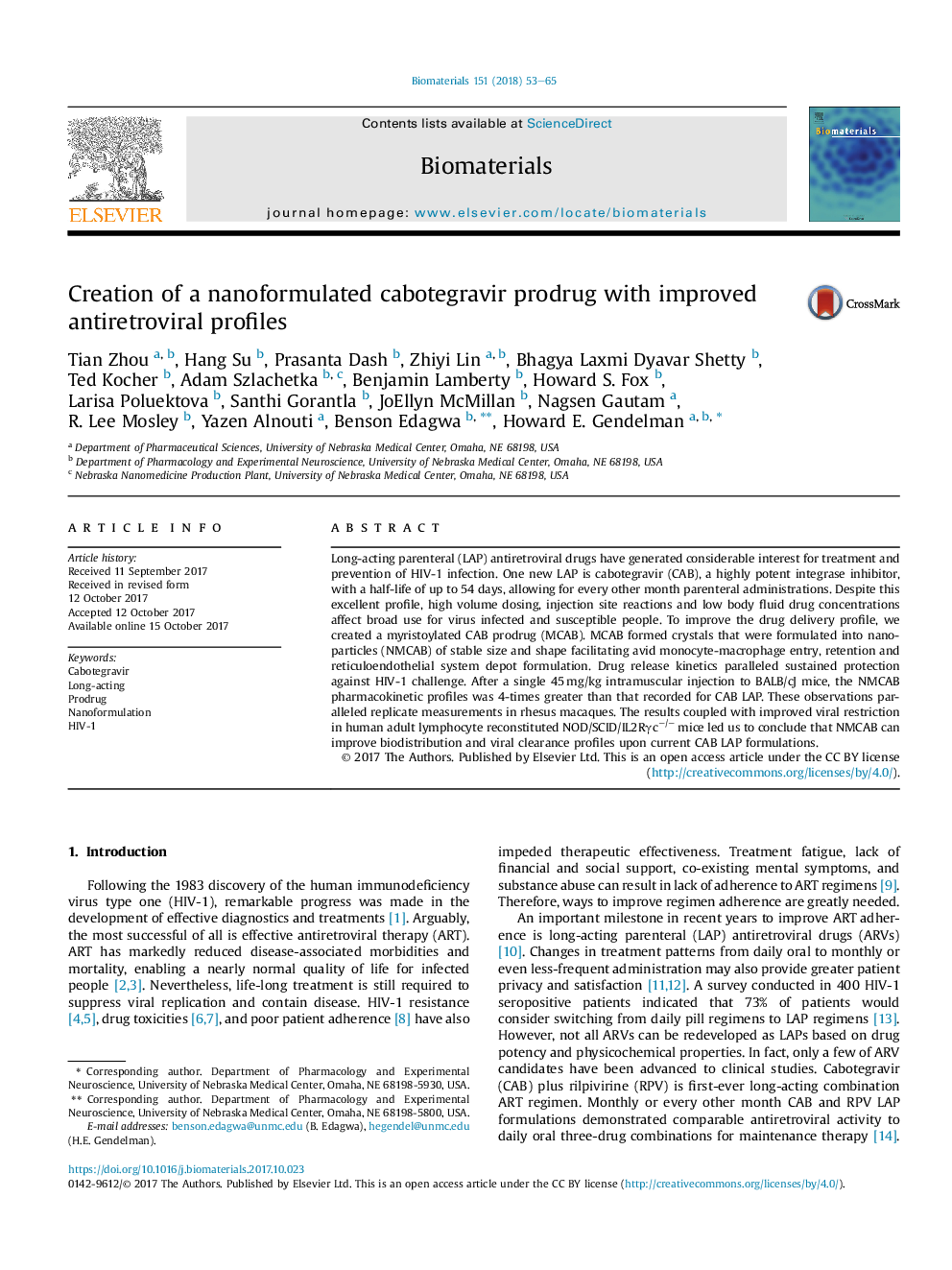| Article ID | Journal | Published Year | Pages | File Type |
|---|---|---|---|---|
| 6484806 | Biomaterials | 2018 | 13 Pages |
Abstract
Long-acting parenteral (LAP) antiretroviral drugs have generated considerable interest for treatment and prevention of HIV-1 infection. One new LAP is cabotegravir (CAB), a highly potent integrase inhibitor, with a half-life of up to 54 days, allowing for every other month parenteral administrations. Despite this excellent profile, high volume dosing, injection site reactions and low body fluid drug concentrations affect broad use for virus infected and susceptible people. To improve the drug delivery profile, we created a myristoylated CAB prodrug (MCAB). MCAB formed crystals that were formulated into nanoparticles (NMCAB) of stable size and shape facilitating avid monocyte-macrophage entry, retention and reticuloendothelial system depot formulation. Drug release kinetics paralleled sustained protection against HIV-1 challenge. After a single 45â¯mg/kg intramuscular injection to BALB/cJ mice, the NMCAB pharmacokinetic profiles was 4-times greater than that recorded for CAB LAP. These observations paralleled replicate measurements in rhesus macaques. The results coupled with improved viral restriction in human adult lymphocyte reconstituted NOD/SCID/IL2Rγcâ/â mice led us to conclude that NMCAB can improve biodistribution and viral clearance profiles upon current CAB LAP formulations.
Keywords
Related Topics
Physical Sciences and Engineering
Chemical Engineering
Bioengineering
Authors
Tian Zhou, Hang Su, Prasanta Dash, Zhiyi Lin, Bhagya Laxmi Dyavar Shetty, Ted Kocher, Adam Szlachetka, Benjamin Lamberty, Howard S. Fox, Larisa Poluektova, Santhi Gorantla, JoEllyn McMillan, Nagsen Gautam, R. Lee Mosley, Yazen Alnouti, Benson Edagwa,
